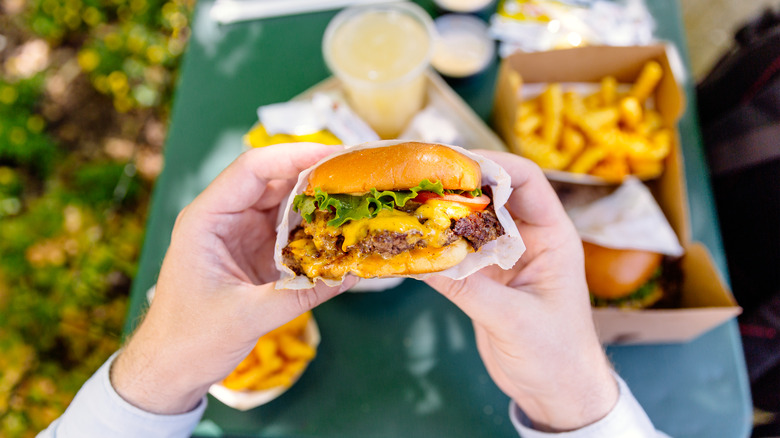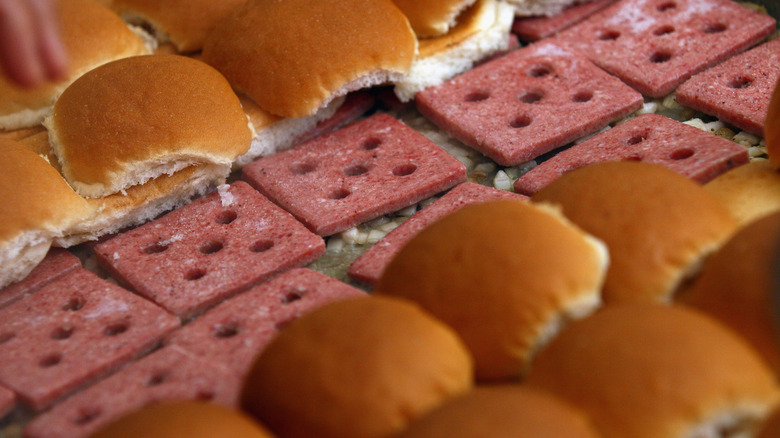The Original Fast Food Restaurant Isn't The One You'd Expect
When you think about fast food, there's a chance one image comes to mind: a pair of golden arches. McDonald's is the face of American fast food on a global scale for a good reason: It leads the pack in sheer volume of locations, with over 41,000 restaurants worldwide, and sells an estimated 75 burgers every second. But you might be surprised to learn that Mickey D's isn't the originator of the fast food hamburger. That honor belongs to White Castle.
Founded in 1921 in Wichita, Kansas, White Castle was born out of a partnership between an innovative fry cook, Walter Anderson, and a wealthy industrialist, Billy Ingram. Though Anderson didn't invent the hamburger patty, which traces its roots to Hamburg, Germany, he's allegedly the mind behind its modern conception. Historian David Hogan told radio station KMUW, "Prior to [Anderson], [the hamburger] had been essentially a meatball on a slice of bread. He put it between two halves of a bun, and now we have the food that we're most familiar with."
With Ingram's involvement, Anderson's small handful of burger stands were reimagined as the "The White Castle System of Eating Houses," a name meant to signify cleanliness and stability. To counteract Americans' suspicion of ground beef (a result of writer Upton Sinclair's 1906 exposé of the meatpacking industry, "The Jungle"), White Castle emphasized hygienic and consistent food preparation. It proved to be a winning strategy, with the company expanding rapidly throughout the Midwest and beyond by the late 1920s.
White Castle's status and legacy today
White Castle continued to be a leader in the fast food race throughout the 20th century. In 1961, it became the first chain to sell over one billion hamburgers, a feat McDonald's achieved in 1963. White Castle was also the first chain to advertise with newspaper coupons, debuting a "five burgers for only 10 cents" offer in 1933. With the chain's growing popularity came a litany of imitators, many of which went by names suspiciously similar to White Castle.
As a result of this legacy, Time named the White Castle slider the No. 1 "Most Influential Burger of All Time" in 2014, crediting its success to the popularity of burgers in America. But despite the chain's head start and steady growth, its presence today is nowhere near as ubiquitous as behemoth competitors like McDonald's, Burger King, or Wendy's. A far cry from the thousands boasted by rival chains, there are less than 400 White Castle locations in the U.S., with most concentrated in the Midwest and around New York.
Why isn't White Castle as big as McDonald's today? There are a number of possibilities, but perhaps the most obvious lies in differing business strategies. McDonald's largely owes its meteoric success to its franchise model, while White Castle consists solely of company-owned outlets. Still, White Castle continues to maintain a solid presence in its regional markets and has found success selling its signature square sliders in frozen form at grocery stores nationwide.

